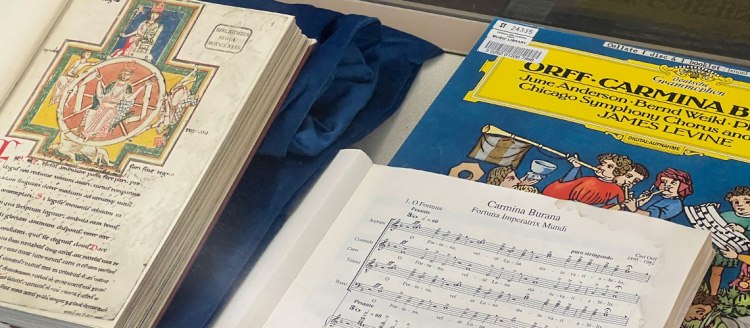On the nights of April 26 and 27, the Fresno State Concert Hall overflowed with sold-out shows for the College of Arts and Humanities’ collaborative rendition of Carl Off’s “Carmina Burana.” With Dr. Thomas Loewnheim conducting, students from Fresno State and Clovis North, plus music faculty and guest artists, packed the concert hall stage to perform the cantata, which proved to be a vibrant and astounding spectacle.
As audiences came into the concert hall, they were handed a program that included a full translation of the manuscript created by students from Fresno State. The Carmina Burana Translation Project brought together 38 Latin and German students across Fresno State. Since Carmina Burana was included as part of the Arts and Humanities Showcase, it provided an opportunity for the Department of Modern and Classical Languages and Literatures (MCLL) to complement the performance with their translation expertise. Additionally, the translation team also created a website that delves further into the Carmina Burana translations and an exhibition in the Fresno State Library that included a facsimile of the original manuscript.
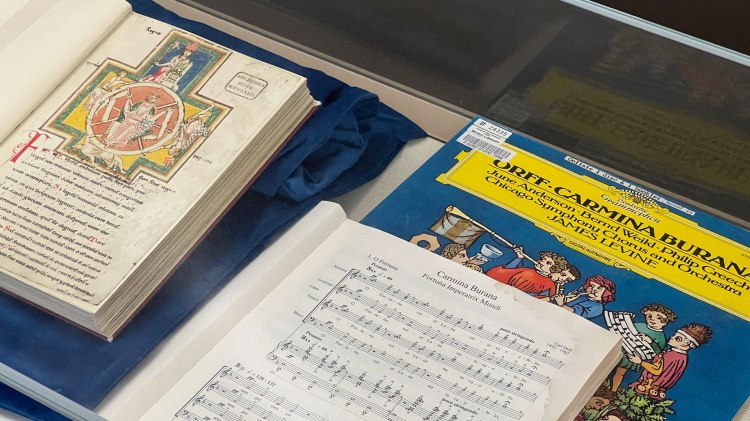
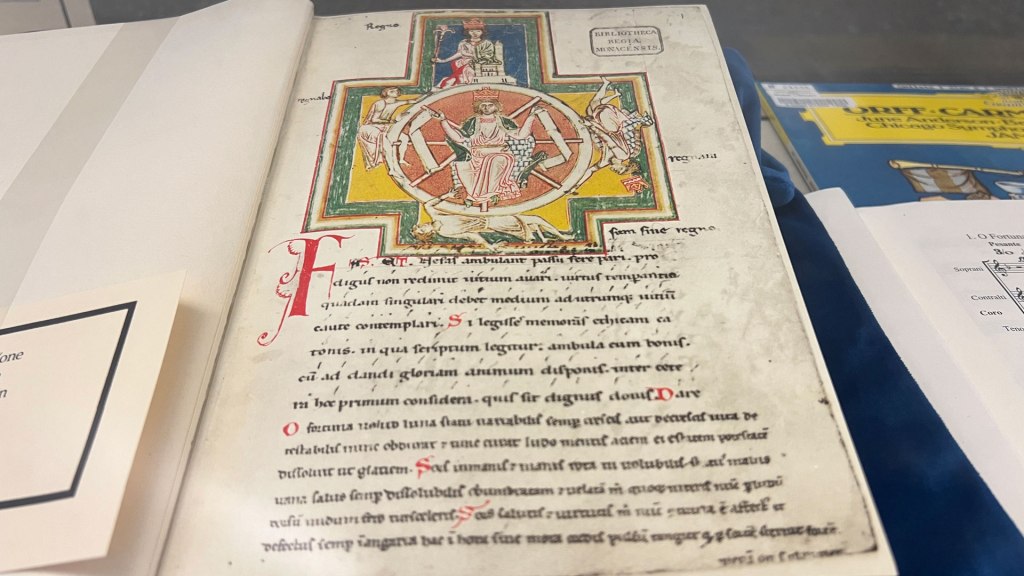
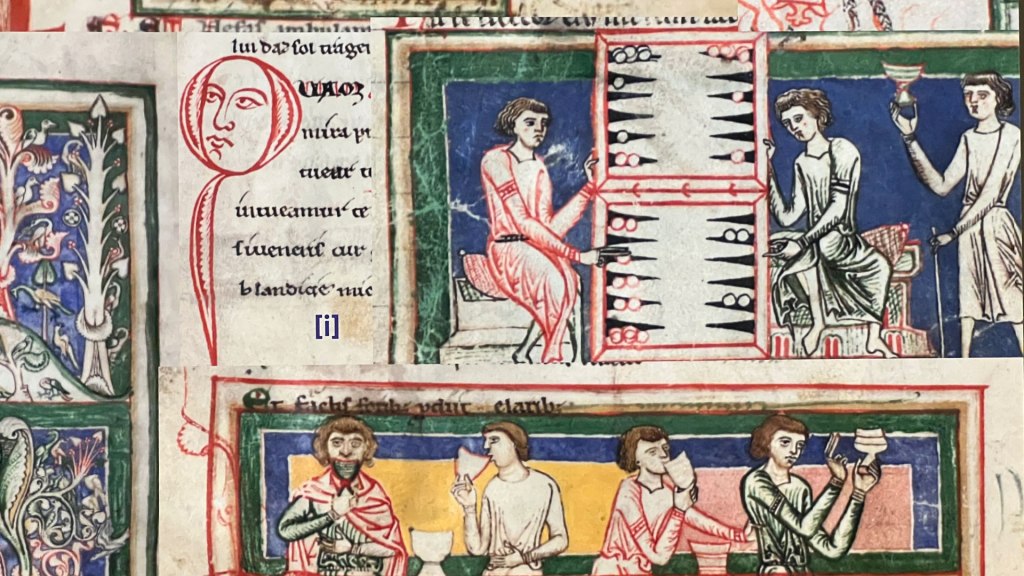
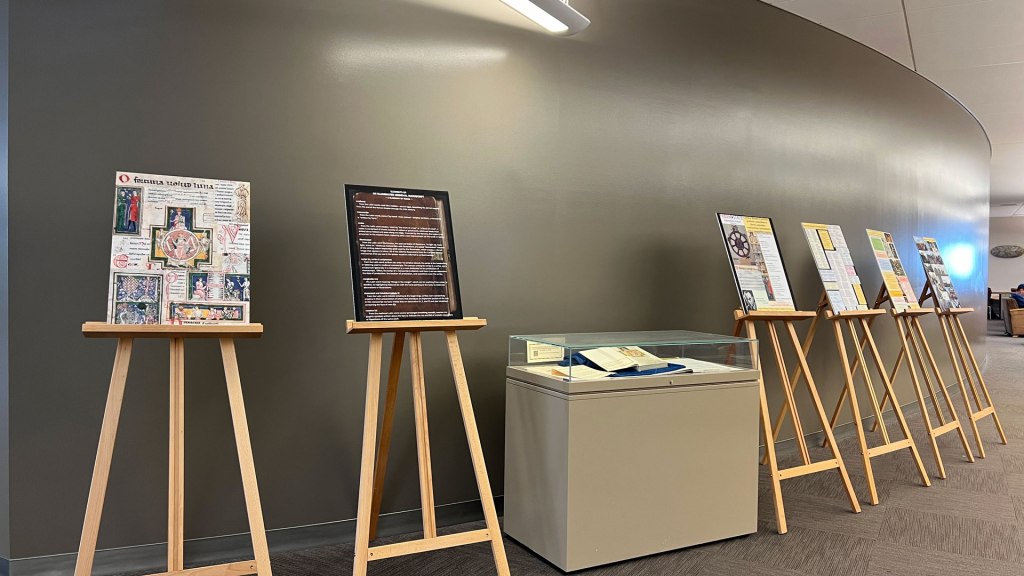
Orff’s Carmina Burana consists of 24 songs, primarily in Latin and High German, which he selected from the 254 songs and poems in the medieval manuscript and set to music.
The translation project was led by Dr. Kristi Eastin from MCLL, who gathered current students and recent alumni of Latin and German during the spring semester to create close and useful translations of the medieval writings. Eastin noted the valuable opportunity the manuscript provided not only to study the language used but also to learn about the manuscript itself, as well as the creativity and spirit of the time period in which it was penned.
“It’s a reflection of the dynamism of the Middle Ages that you don’t imagine when you think of the Middle Ages,” Eastin said.
When she started the project, Eastin was excited but unsure how many students would want to participate. To her surprise, she was met with eagerness and encouragement.
“I know that the first meeting we had was a Saturday night. And I know a lot of people sounded so enthusiastic,” said Taylor Boyd, a business administration major with a minor in classics. “‘Oh, let’s come to campus on a Saturday night and do some Latin.’ I know we all ended up having so much fun.”
Eastin worked with Latin students to translate parts of the poem, while Dr. Amila Becirbegovic, professor of German, worked with students to translate High German, which is more complex than the simplified modern German that students are accustomed to.
Eastin and Boyd noted the difficulty of retaining the significance and underlying elements in the translations, which the students discussed frequently to ensure that both meaning and intent were not lost.
“That’s difficult because the Latin word conveys some sort of meaning. We may not have the precise word in English. We make these choices,” said Eastin. “It was a process of translation and this collaborative effort of finding the right word or getting the best syntax, we really wanted to stick as close as we could to the Latin so that we would provide a useful English translation or commentary.”
A surprise occurred when Dr. Eastin was doing some preliminary research into the Fresno State Library’s materials on the poem. Unexpectedly, the library had a rare facsimile copy of the original manuscript – one of only 900.
Eastin and the translation team organized a display to make the manuscript and posters about the translation project accessible to the community. The exhibition was on display inside the Fresno State Library, on the second floor, for nearly two weeks leading up to the Carmina Burana performances.
During the translation process, Eastin was looking for a way to further inform the audience about the context of the manuscript. For example, there is a reference to the City of Troy falling, which many may not understand in modern times.
“And then when Troy falls, comes crashing down, do we change it to a contemporary reference that maybe everyone would know? We thought, well, maybe we could have just a glossary in the program, but that seemed a little cumbersome. So that was one of the things that prompted the website.”
Art history major Haley Snyder stepped forward to create the website. There, you can find reference notes, see a list of the students and their involvement in the project, and view the entire original manuscript.
Carmina Burana at Fresno State represents the scholarship and enthusiasm of our MCLL students combined with the brilliance and collaborative excellence of the music program. Taken as a whole, it demonstrates what is possible when disciplines combine inside the College of Arts and Humanities.

